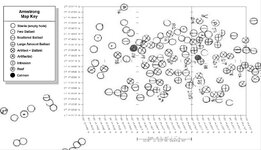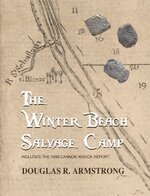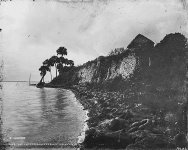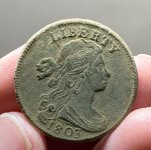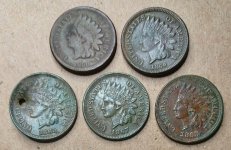signumops
Hero Member
- Feb 28, 2007
- 756
- 226
- Detector(s) used
- Garrett, Minelab, Aqua-Pulse
- Primary Interest:
- All Treasure Hunting
I was going to put Doug Armstrong's reprint of the Winter Beach Salvage Campsite excavations to the press shortly. Meanwhile, he let me look over his 1990 season report for Steve Shouppe's Tequesta work at the Cannon Wreck site. I rectified his dig chart from UTM to GPS style coordinates. I attached a screen shot of part of it. Be aware that none of these holes jive with the Fisher charts circa 2004.
Fortunately, Doug has agreed to let me add this report into the volume on the Winter Beach excavation, even though they are not related directly. His report on the 1990 Shouppe season is quite interesting, and only 4 copies were prepared. It was a typewritten report with xerox copies of the artifact drawings and daily logs, along with the Master Site tickler and a letter from a cannon authority in England sent to Roger Smith. He also included a Topo in UTM showing where the Iron Pile wreck lay in relation to the Cannon Wreck. His dig chart also has some indications of a 1900's debris pile in the vicinity of the Cannon Wreck.
Now, I have all the daily work sheets, which are based upon the beach markers and I wonder if I should publish them along with the other material? If I print at 8.5 inch by 11 inch, you could probably read them well enough. Any advice on this issue?
Fortunately, Doug has agreed to let me add this report into the volume on the Winter Beach excavation, even though they are not related directly. His report on the 1990 Shouppe season is quite interesting, and only 4 copies were prepared. It was a typewritten report with xerox copies of the artifact drawings and daily logs, along with the Master Site tickler and a letter from a cannon authority in England sent to Roger Smith. He also included a Topo in UTM showing where the Iron Pile wreck lay in relation to the Cannon Wreck. His dig chart also has some indications of a 1900's debris pile in the vicinity of the Cannon Wreck.
Now, I have all the daily work sheets, which are based upon the beach markers and I wonder if I should publish them along with the other material? If I print at 8.5 inch by 11 inch, you could probably read them well enough. Any advice on this issue?


